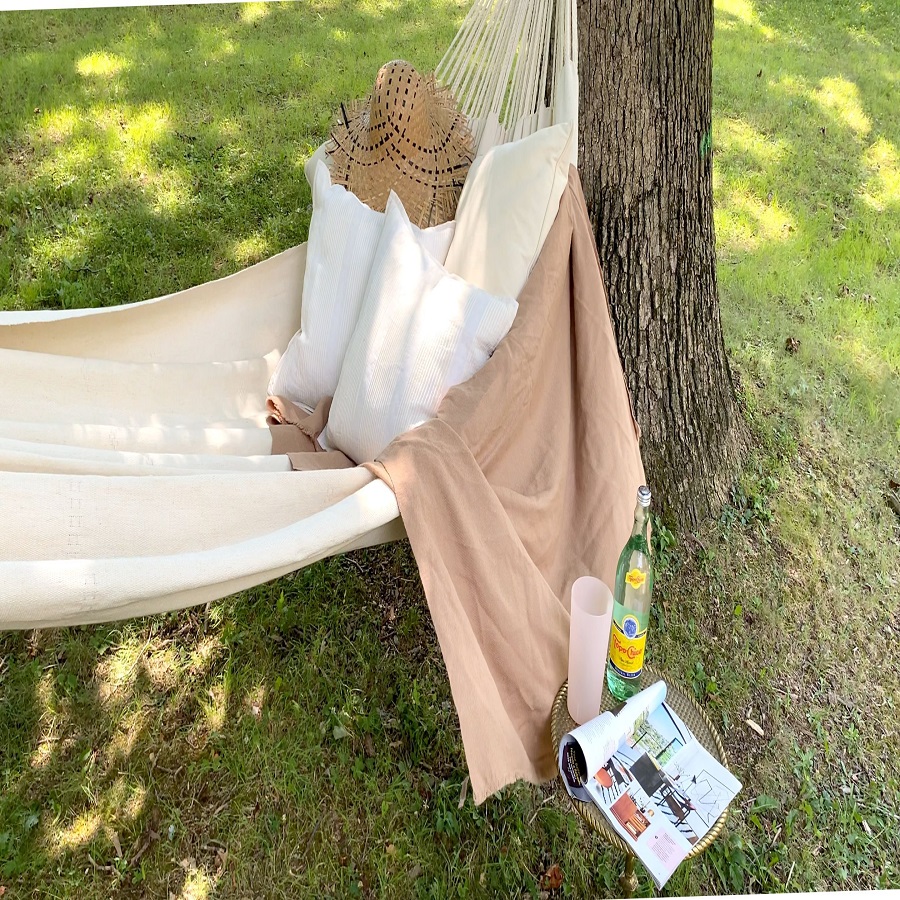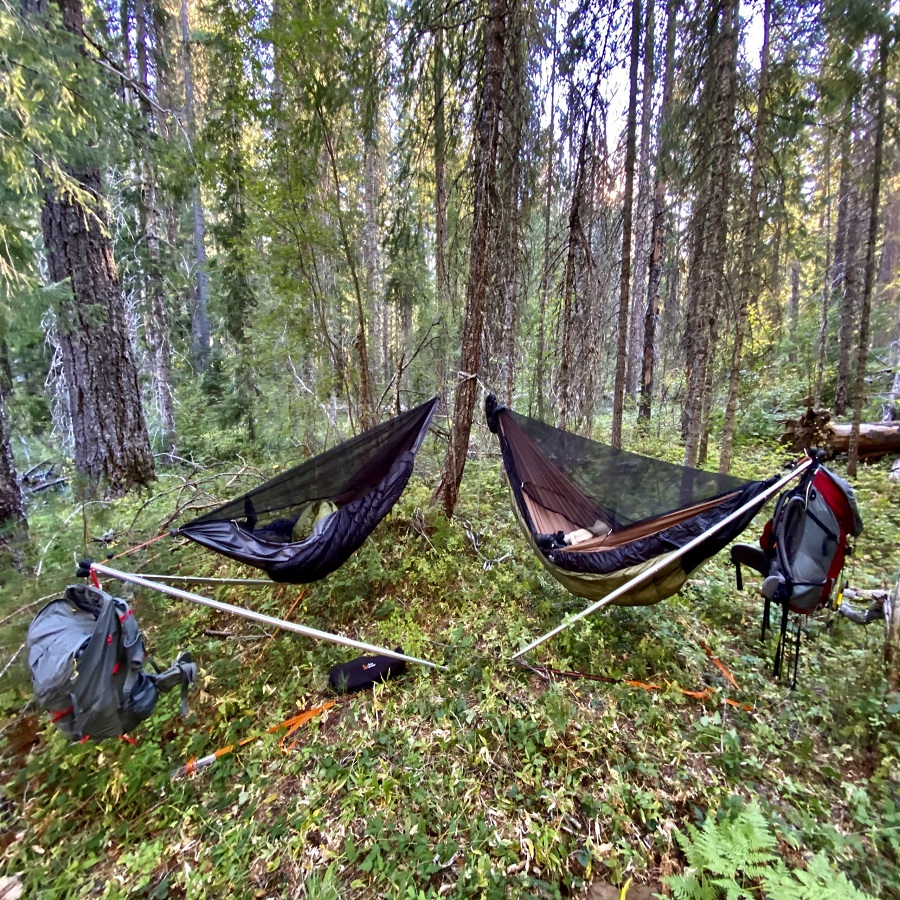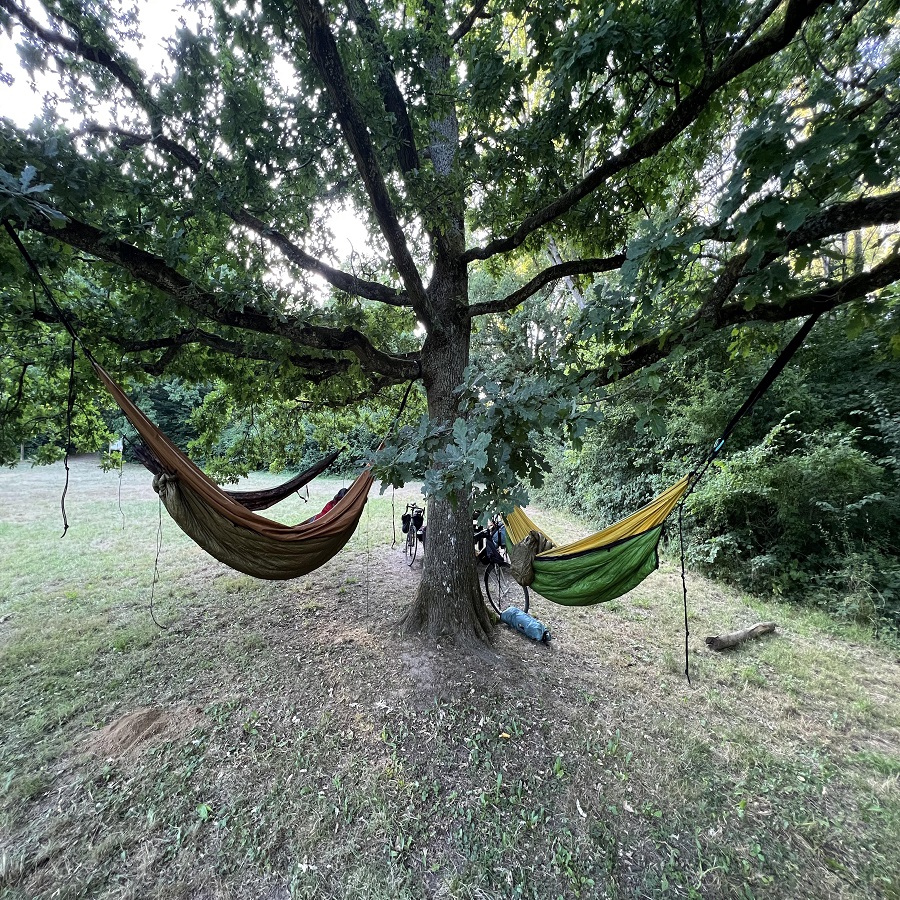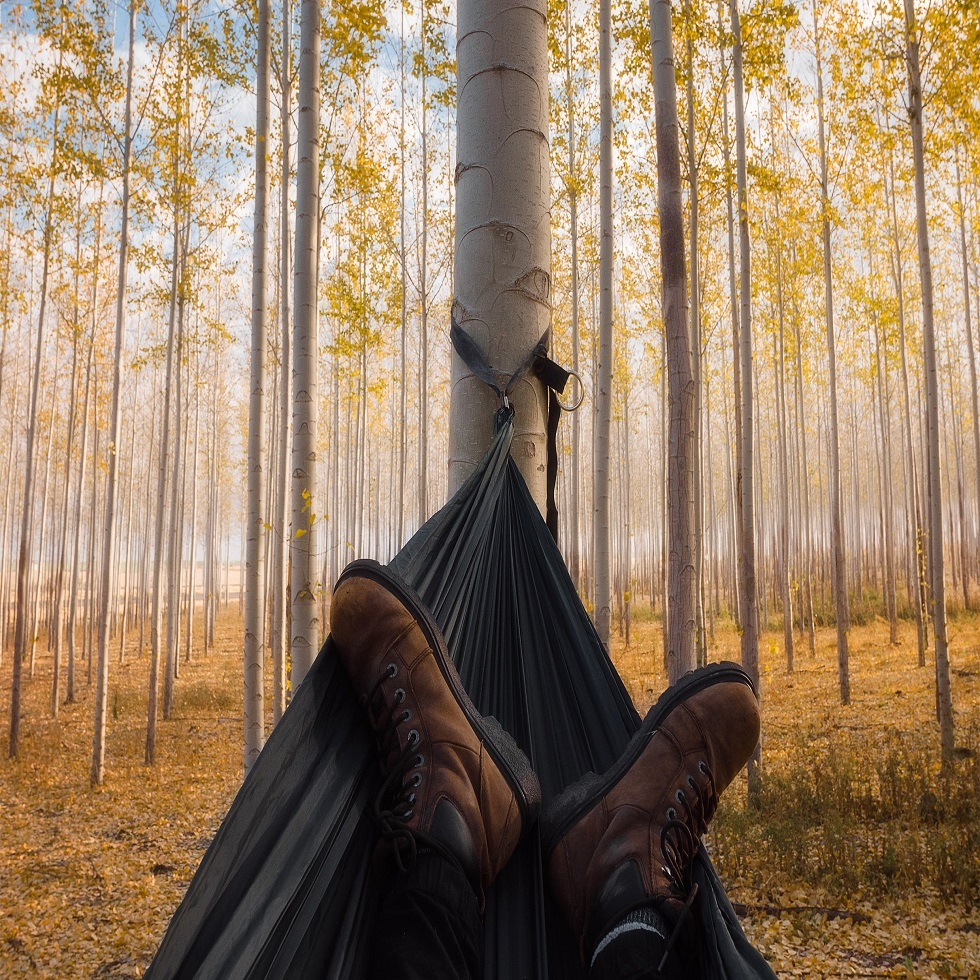Selecting the Ideal Trees for Your Hammock
Choosing the right trees is crucial for hammock safety and tree health.
Factors to Consider When Choosing Trees
When selecting trees to hang your hammock, consider several important factors:
- Tree Type: Opt for sturdy species like oak or maple.
- Tree Size: Ensure trees are thick and mature enough to support weight reliably.
- Distance Between Trees: Ideal spacing typically ranges from 10 to 15 feet.
- Surroundings: Avoid trees near hazards or overly public spaces for privacy and safety.
Health and Strength of Potential Trees
To ensure durability and safety, you need healthy and strong trees:
- Inspect for Damage: Check for signs of decay, disease, or damage.
- Stable Branches: Assess branches for strength; they should not show signs of weakness.
- Avoid Young Trees: Young, thin trees may not support the weight and can be damaged easily.
Every tree chosen must guarantee both your safety while using the hammock and the health of the tree itself.

Understanding Different Hammock Materials and Types
Choosing the perfect hammock can enhance your relaxation. Different materials and styles affect durability and comfort.
Choosing the Right Material for Durability and Comfort
When you pick a hammock’s material, think about longevity and how it feels.
- Cotton hammocks are soft and cozy, great for naps. But, they may not endure harsh weather as long as others.
- Polyester is tough and can face the elements. It’s less snug than cotton though.
- Olefin is a synthetic option that stands up to outdoor challenges, yet it might not be as plush as cotton.
Test out a few to see which you like best for your outdoor naps or reading times.
The Pros and Cons of Various Hammock Styles
Different hammock designs can change your lounging experience. Some are for lying flat, others for sitting snug.
- Traditional hammocks let you lie down and often have a gentle sway. They usually have no spreader bars.
- Hammock chairs offer a seat in the air. They’re compact and fit in smaller spaces easily.
- Spreader-bar hammocks keep the fabric taut, making it easier to hop on and off. They’re less stable, though.
Choose what fits your lifestyle, whether for a quick sit or deep relaxation. Think about how and where you’ll use your hammock before deciding.
Hammock Hanging Essentials: Straps, Stands, and Knots
When hanging a hammock, knowing your options is key to a safe and secure setup. Let’s explore the benefits of different methods like using tree straps, hammock stands, and tying knots.
The Benefits of Using Tree Straps
Tree straps are a hammock hanger’s best friend for several reasons. They are easy to set up and adjust. Their wide design distributes weight evenly, reducing harm to trees. Using tree straps can protect tree bark from damage caused by pressure. They offer flexibility in choosing hanging points, making them perfect for various outdoor settings.
Hammock Stands: An Alternative to Trees
Not all outdoor spaces have strong trees suitable for hammock hanging. A hammock stand provides a great alternative. These stands are very portable, allowing you to set up a hammock anywhere. They come in diverse styles to fit any decor. Reliable and sturdy, hammock stands need no trees, hence no harm to nature.
How to Tie Secure Knots for Hammock Hanging
Mastering the art of tying knots is crucial for hammock safety. Proper knots ensure the hammock is stable and secure. Learn simple knots like the bowline or figure-eight. Practice makes perfect, and secure knots mean a safer hang. Always double-check knots for firmness before use.

Finding the Perfect Spot for Your Hammock
Once you’ve selected the right hammock, the next step is finding the ideal spot to hang it.
Key Considerations for Hammock Placement
Hammock placement is about balance. Here are things to keep in mind:
- Sun and Shade: Look for a spot with a good mix of sun and shade.
- Ground Condition: Choose level ground for comfort and safety.
- View: Find a place with a relaxing view, like your garden or the woods.
- Privacy: A secluded spot is best for peaceful hammock time.
- Accessibility: Make sure your hammock is easy to get to and from.
Outdoor and Indoor Hanging Options
Your hammock can hang both outside and inside. Here’s how:
- Outdoor: Between two trees, on a porch, or with a hammock stand in the yard.
- Indoor: In a sunroom, living area, or bedroom, using sturdy wall hooks.
Both options need a secure attachment and enough space to ensure comfort and ease of use.
Safety Measures for Hanging Hammocks
Proper safety steps prevent accidents and ensure lasting hammock enjoyment.
Ensuring Your Hammock is Securely Installed
Check these key points for a safe hammock hang:
- Proper Tools: Use recommended hooks and straps.
- Weight Capacity: Never exceed hammock’s weight limit.
- Tight Connections: Ensure hooks and knots are tight.
- Sway Test: Gently push the hammock to test stability.
Following installation, inspect the hammock each time before use.
The Importance of Regular Inspection and Maintenance
Routine checks keep your hammock safe:
- Wear Signs: Look for fraying or tears.
- Loose Parts: Tighten bolts and straps if needed.
- Adjustments: Change hanging height or angle for comfort and safety.
- Weather Damage: Check for weather-related damage and dry the hammock after rain.
Consistent care prolongs your hammock’s life and keeps it cozy and safe.

Hammock Accessories for Enhanced Relaxation
To make your hammock time even more enjoyable, consider adding some key accessories to your setup.
Must-Have Accessories for a Comfortable Hang
A few well-chosen accessories can transform your hammock into a cozy retreat. Here’s what you might need:
- Pillows: A soft pillow adds comfort for your head or back.
- Blankets: On cooler days, a blanket keeps you warm as you lounge.
- Side Pouch: Keep your book or drink within reach with an attachable side pouch.
- Mosquito Net: In bug-heavy areas, a net protects you from pests.
- Rain Tarp: A tarp overhead shields you from rain and provides shade.
- Underquilt: For added warmth from below, an underquilt prevents the cold from seeping in.
Include these items as part of your hammock setup, and you’re all set for maximum comfort.
Creating a Cozy Hammock Setup for Ultimate Relaxation
Creating the perfect hang spot involves more than just hanging your hammock. Make it a sanctuary with these tips:
- Install Soft Lighting: Hanging lanterns or string lights create a tranquil environment.
- Choose Calming Colors: Opt for hammock colors that soothe, like blues or greens.
- Incorporate Nature: Place potted plants around your hammock area for a natural vibe.
- Play Relaxing Music: Use a portable speaker to play sounds that help you unwind.
- Ensure Privacy: Set up curtains or privacy screens for an undisturbed experience.
By incorporating these elements, your hammock becomes the ideal spot for peaceful relaxation any time you need a break.
Minimizing Tree Damage When Hanging Hammocks
As hammock enthusiasts, we all love the relaxation they offer, but it’s crucial to hang them without harming trees. Trees provide vital environmental benefits and aesthetics to our surroundings, so protecting them is a responsibility we share. Considering eco-friendly approaches can help ensure that our leisure doesn’t disrupt the well-being of these natural pillars.
Eco-Friendly Alternatives to Tree Hanging
If you’re keen on minimizing your ecological footprint, consider alternatives to tree hanging. Freestanding hammock stands are a fantastic option. They don’t require any trees and can be placed anywhere in your yard or patio. They are easy to set up and move around, making them versatile additions to your outdoor gear. Another great choice is using hammock posts that can be installed securely into the ground. These provide a strong and stable base for your hammock without relying on trees.
Guidelines to Protect Trees from Hammock Damage
For those who prefer the traditional method of hanging hammocks between trees, it’s essential to ensure that your method does not damage the trees. Utilizing tree straps is the most tree-friendly way to hang your hammock. Opt for wide, flat straps that disperse weight evenly across a broader section of the tree bark. This method prevents the scarring and harmful indentation that thin ropes or chains can cause. Always choose healthy, mature trees for hanging a hammock, as they can better support the weight and minimize potential harm. Further, avoid using the same trees repeatedly and rotate your hanging spots to give the trees rest periods, reducing the wear on any single tree.
Hammock Enjoyment Tips
As an SEO expert and professional blogger, I understand the importance of making every moment in your hammock special. Here are some tips to enhance your hammock experience.
Making the Most of Your Hammock Experience
- Find Your Comfort Angle: Adjust the hammock so that you can lie diagonally for the flattest lay.
- Bring Entertainment: A good book or some soothing music can make the time more enjoyable.
- Dress for the Weather: Layers are key if it’s chilly; sunblock and a hat if it’s sunny.
- Keep Hydrated: Have a water bottle within reach to stay refreshed.
- Embrace Nature: Close your eyes, listen to the sounds around you, and breathe deeply.
Final Thoughts on Responsible Hammock Enjoyment
Loving your hammock time means being mindful of how you hang it. Protect trees by using safe methods like tree straps. Rotate your hammock spots to give trees a break. Choose sturdy trees and inspect your hammock often for wear. Remember, responsible hanging ensures many more relaxing days in your hammock!
